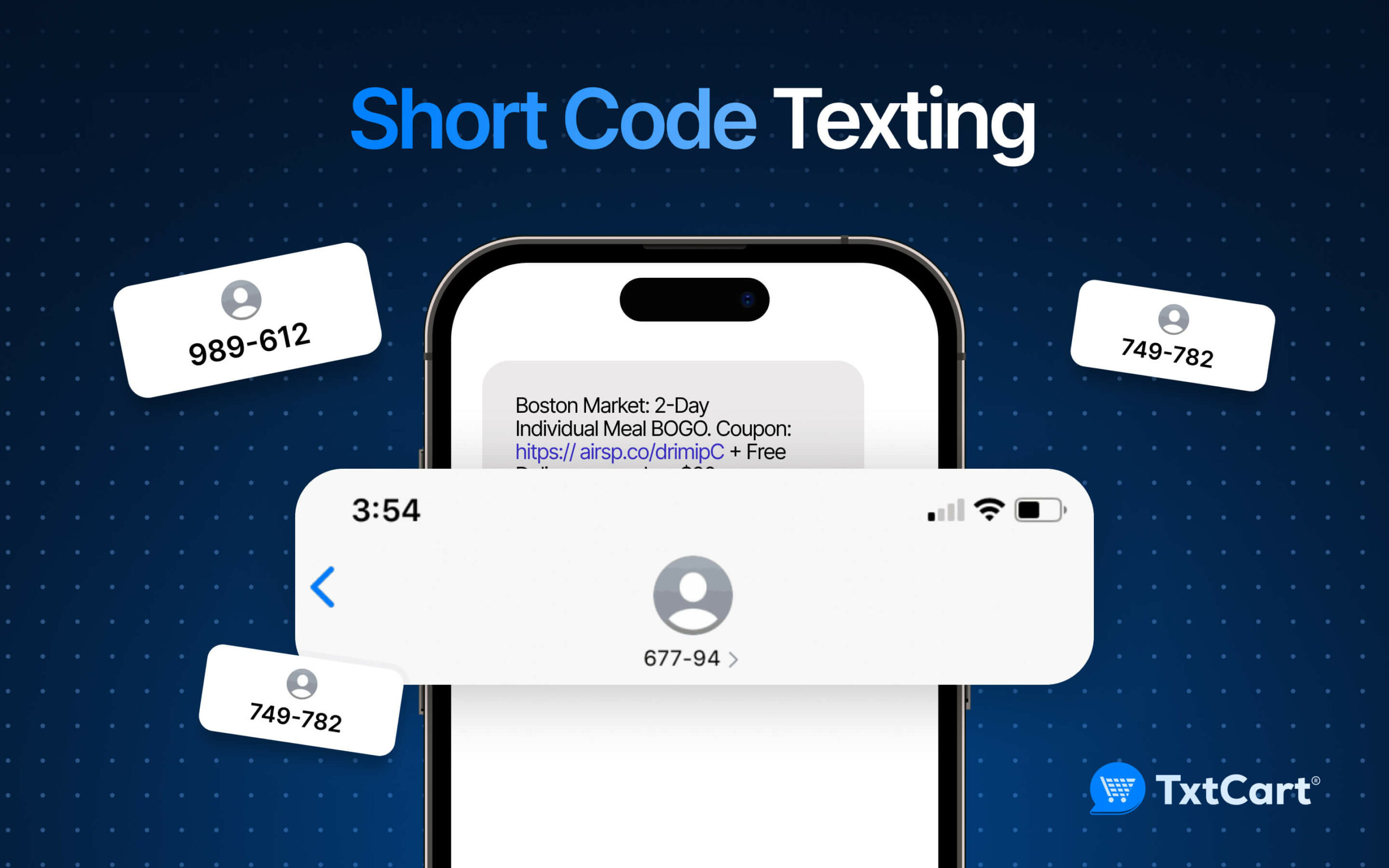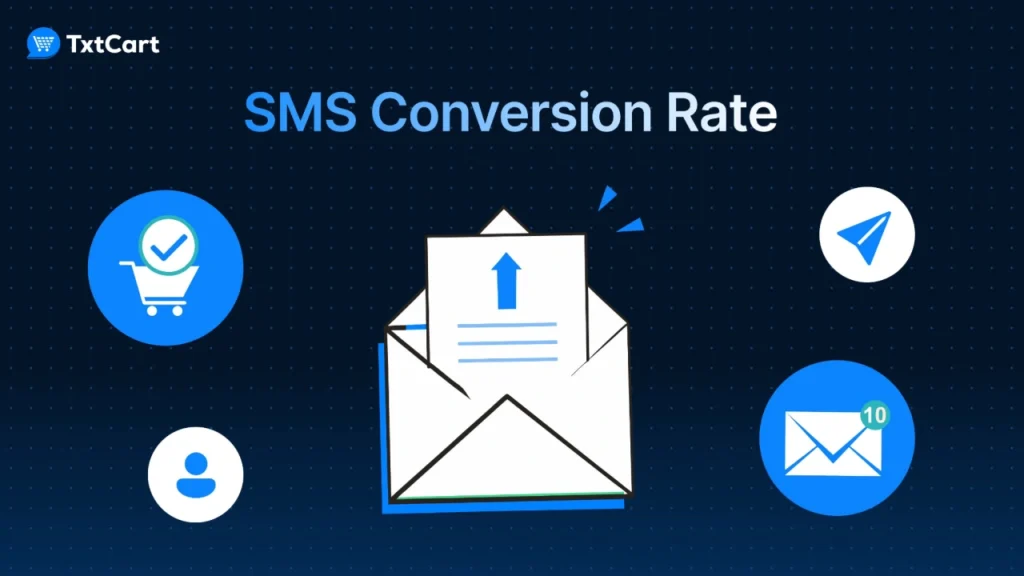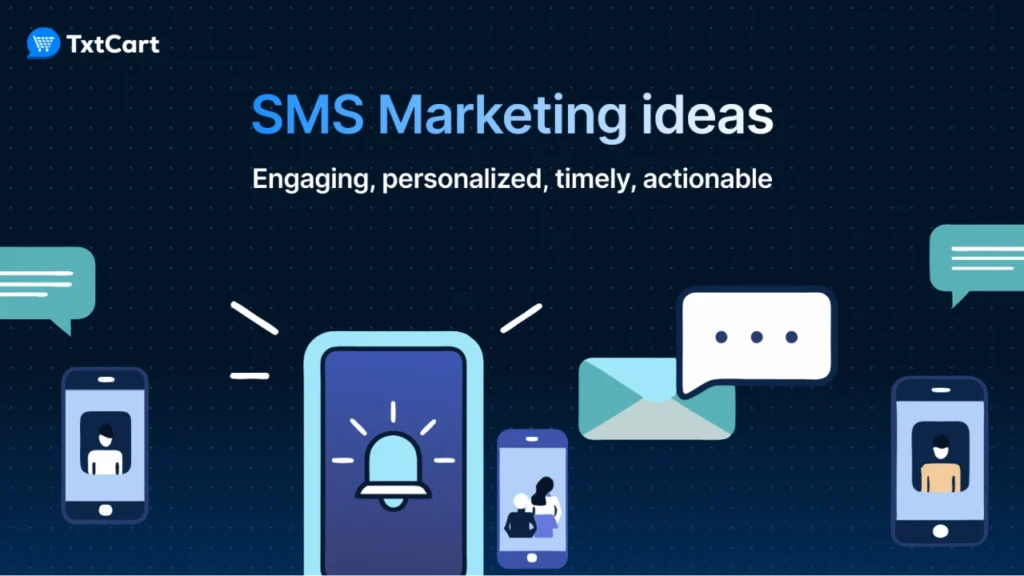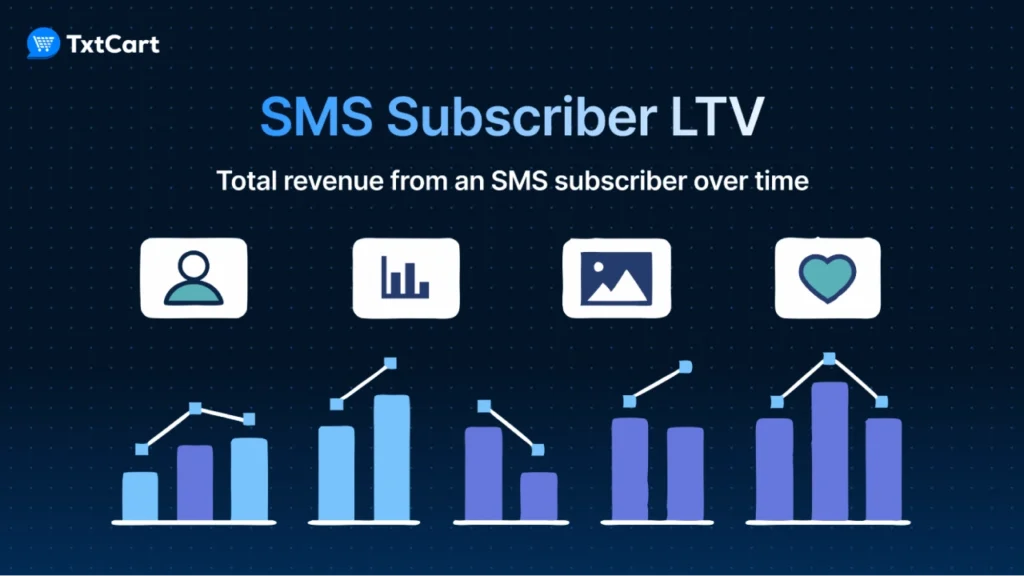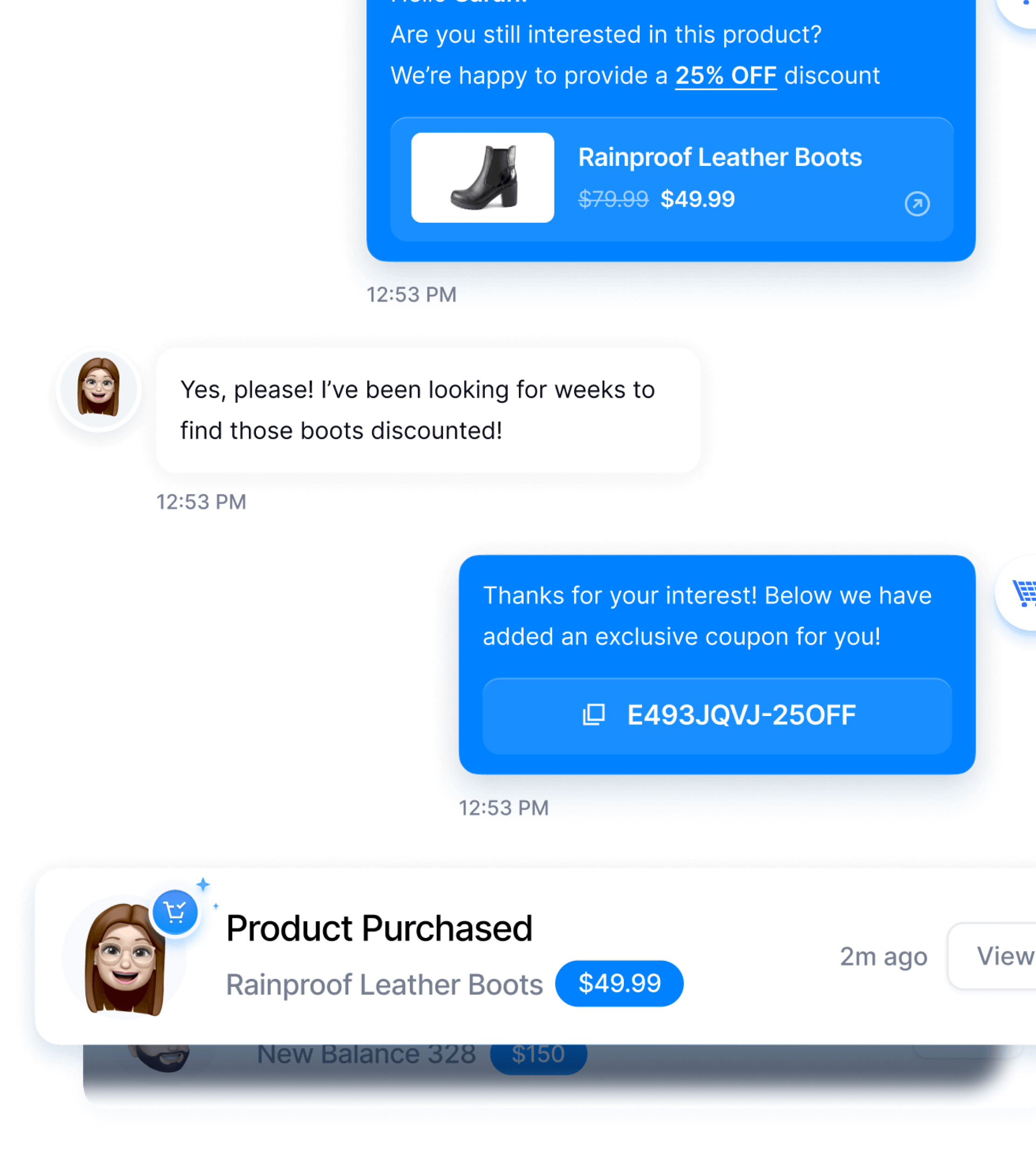SMS marketing is still relevant as 64% of consumers want businesses to contact them via SMS more often. You surely want to do it as right as possible!
One way to make your SMS marketing even better is by using something called Short Code Texting.
Here is an SMS Short Code Guide to help you know what it is and how it can help your business stand out in today’s competitive world.
Introduction to short code texting
An SMS short code is a five or six-digit phone number that a brand sends SMS marketing campaigns to its customers. Shortcode texting campaigns enable two-way SMS marketing as companies use unique keywords in their campaign ads, and customers engage by including the specified keyword in their text responses to the shared short code.
Understand the difference between long codes and toll-free SMS.
| Aspect | Long Codes | Toll-Free SMS |
| Costs | Lower cost per message | The initial setup is costly and also the per-message cost is comparatively higher. |
| Sender Identification | The sender ID is a long phone number, which is not easily recognizable to recipients. | Uses an easy-to-remember toll-free number. These numbers start with prefixes like 1800, or 888, which make them stand out from |
| Use Cases | Commonly used for one-way communication, such as notifications and alerts. Two-way communication is possible, but the sender ID may not be as user-friendly. | Designed for two-way communication, facilitating customer engagement, feedback, and inquiries. Ideal for businesses aiming to establish a professional and reliable communication channel with customers. |
Types of SMS shortcodes
There are majorly two types of shortcodes. Some of them are:
Shared short codes
A shared text message short code is like a community phone number for businesses. It’s a 5-to-6-digit number approved by phone carriers, allowing companies to send lots of SMS and MMS messages without being marked as spam.
Many businesses use the same shared short code, which is more cost effective than having an exclusive one. They’re commonly used for things like one-time passwords, promotions, and alerts. Think of it as an apartment building where each business has its own mailbox (keyword) to keep messages separate.
Dedicated short codes
On the other hand, a dedicated short code is like having your own private phone number. It’s a 5 or 6-digit number used by one business to send messages to lots of people.
Unlike shared codes, dedicated ones give you full control over the content and have no restrictions on keywords. They can be random or chosen for better brand recognition, like a memorable phone number.
Dedicated short codes are best for businesses that want their own exclusive line for sending multimedia messages and time-sensitive info. However, they take longer to set up, up to 6 weeks after submitting paperwork to carriers.
Benefits of using short code texting for businesses
Some of the major benefits of short code texting for businesses are
High throughput rates
Short code texting allows businesses to send a large number of SMS or MMS messages quickly as these codes are easy to remember. It allows you to send approximately 100 messages per second. This means you can reach more customers in less time, making it ideal for time-sensitive promotions or alerts.
Memorability
Short codes are typically 5-to-6-digit numbers, making them easy for customers to remember. This increases engagement because people are more likely to recall and use your shortcode for SMS opt-ins or responses.
Carrier vetting
To obtain shortcodes, businesses have to undergo a rigorous approval process by phone carriers. It is to ensure that you meet industry guidelines and standards which will help you not get flagged as spam later by customers. This vetting process adds an extra layer of credibility to your communications.
How to obtain and set up a SMS short code
Here is a step-by-step guide to getting an SMS short code number:
- First of all, apply to lease a short code from the US Short Code Administration.
- Provide your details on how you’ll use the short code whether it is for customer care or marketing.
- Next, share what types of media you’ll send out through the shortcode.
- Once your application is approved, you are qualified to launch your shortcode.
- Register the code with different telephone carriers.
- You can also use a third-party SMS provider that will take care of the shortcode obtaining process on your behalf. It usually doesn’t cost more and can save time, as they’re experienced in the application process.
Best practices for short-code SMS campaigns
Here is the list of the most effective short-code best practices to adopt for your SMS marketing campaigns:
1. Crafting engaging messages
For crafting engaging SMS campaigns using shortcodes, it is important to follow guidelines. Keep your texts concise, and make sure to mention your brand name in your messages. Use simple language to convey your message so as not to overwhelm the recipient. Include a strong call to action to prompt desired responses.
2. Compliance with SMS marketing laws and user consent
It is important to comply with TCPA (Telephone Consumer Protection Act) and CTIA (Cellular Telecommunications Industry Association) to avoid fines of up to $1,500. It makes
sure that your messages are not reported as spam and ensures you get user consent before texting. It helps in making a positive relationship through respectful communication.
3. Optimizing message content
Content optimization is a must if you are expecting conversions from short-code texting. Make sure to personalize details and offers in your messages to make them relevant. Also, integrate rich visuals to make your messages more engaging. To get your hands on what messages resonate with your target group the most, test different content formats.
4. Timing and frequency for engagement and opt-outs
Choosing the right timing and frequency is important for enhancing the impact of your short-code SMS messages. Get the data about your audience’s time zones to prepare the right strategy for timing the messages and use A/B testing to find out the appropriate frequency for your SMS marketing.
Common challenges and solutions in short code texting
Short code texting, often used in SMS or messaging applications, comes with its own set of challenges. Here are some common challenges and solutions:
Message deliverability
Message deliverability depends on your compliance with carrier regulations, and overlooking it might label your marketing messages as spam. To overcome this, it is not only important to perform compliance but also adhere to best practices, such as avoiding spammy content and regularly cleaning your contact list to maintain a good sender reputation.
Managing Opt-Ins and Opt-Outs:
Use opt-in methods like keyword-based texts or online checkboxes with clear messaging on message frequency and service details. Make sure opt-out instructions are provided in every communication. It will provide trust to customers that they can discontinue receiving messages once they find it irrelevant.
Navigating Carrier Restrictions:
Carriers impose several limitations on message content, frequency, or specific keywords to prevent spam or misuse. It is important to remain informed about evolving carrier guidelines to make sure you regularly update your content to align with their rules and seek campaign pre-approval.
FAQs
What is the difference between an SMS long code vs. a short code?
SMS long codes are regular 10-digit phone numbers used for person-to-person texting, while short codes are 5-to-6-digit numbers for mass messaging. Long codes are for personal use, and shortcodes are for businesses and campaigns to reach many people.
How do users opt in or out of SMS?
Users can opt-in by texting a keyword to a short code or checking a box during online sign-up. Opting out is easy; users simply text a specific keyword, usually “STOP,” to the shortcode to unsubscribe from messages.
How much does an SMS short code cost?
The cost of an SMS short code varies ranging from $1,000 to $1,500 per month. Shared short codes, used by multiple businesses, are more cost-effective. Consider your needs and budget when choosing between individual or shared options.
Do SMS shortcodes work in other countries?
SMS short codes are country-specific, meaning a code used in one country won’t work in another. Each country has its own shortcode system. If you plan to send messages internationally, explore shortcode options for each specific country you want to target.
